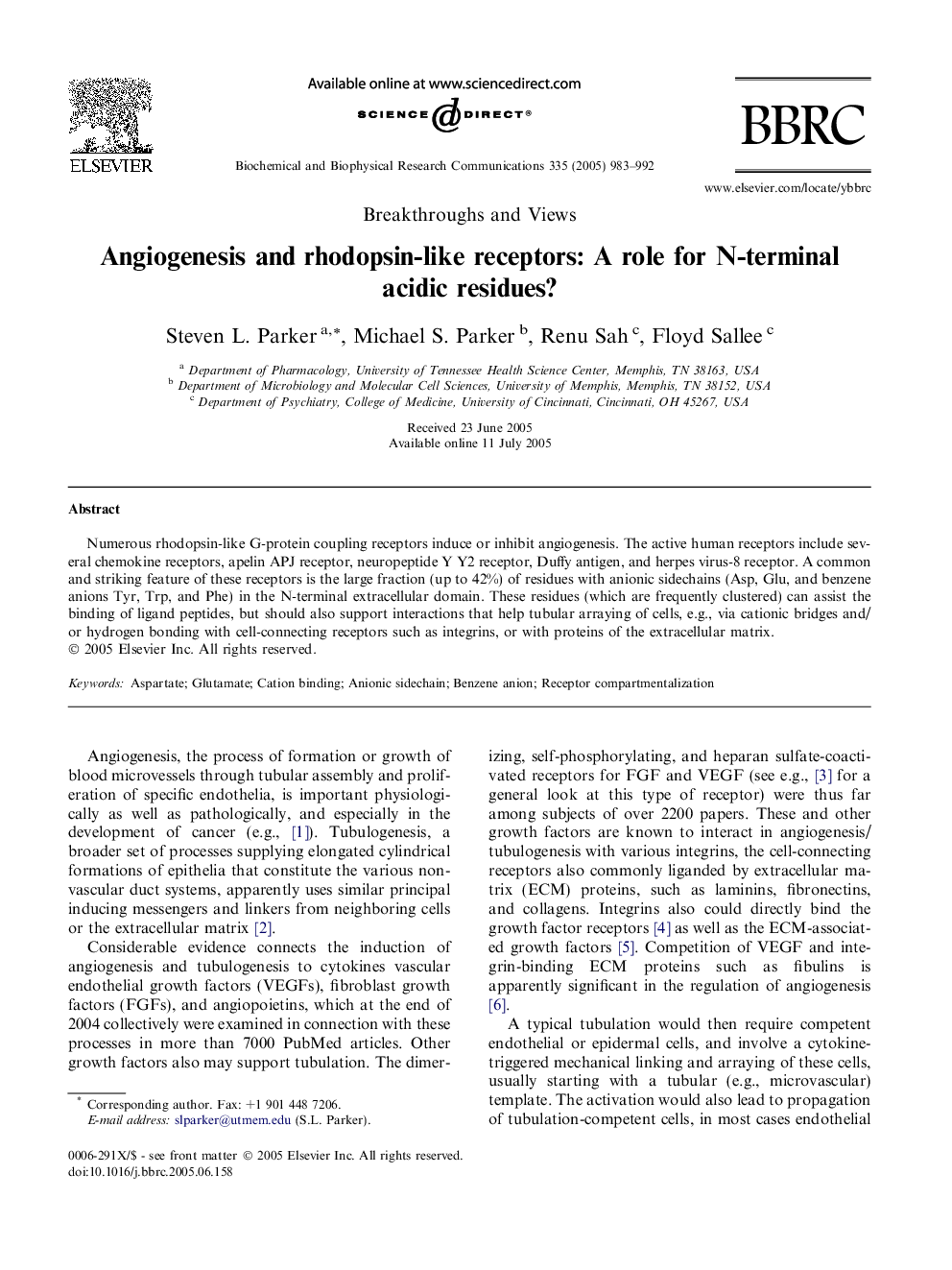| کد مقاله | کد نشریه | سال انتشار | مقاله انگلیسی | نسخه تمام متن |
|---|---|---|---|---|
| 10768428 | 1050810 | 2005 | 10 صفحه PDF | دانلود رایگان |
عنوان انگلیسی مقاله ISI
Angiogenesis and rhodopsin-like receptors: A role for N-terminal acidic residues?
دانلود مقاله + سفارش ترجمه
دانلود مقاله ISI انگلیسی
رایگان برای ایرانیان
موضوعات مرتبط
علوم زیستی و بیوفناوری
بیوشیمی، ژنتیک و زیست شناسی مولکولی
زیست شیمی
پیش نمایش صفحه اول مقاله

چکیده انگلیسی
Numerous rhodopsin-like G-protein coupling receptors induce or inhibit angiogenesis. The active human receptors include several chemokine receptors, apelin APJ receptor, neuropeptide Y Y2 receptor, Duffy antigen, and herpes virus-8 receptor. A common and striking feature of these receptors is the large fraction (up to 42%) of residues with anionic sidechains (Asp, Glu, and benzene anions Tyr, Trp, and Phe) in the N-terminal extracellular domain. These residues (which are frequently clustered) can assist the binding of ligand peptides, but should also support interactions that help tubular arraying of cells, e.g., via cationic bridges and/or hydrogen bonding with cell-connecting receptors such as integrins, or with proteins of the extracellular matrix.
ناشر
Database: Elsevier - ScienceDirect (ساینس دایرکت)
Journal: Biochemical and Biophysical Research Communications - Volume 335, Issue 4, 7 October 2005, Pages 983-992
Journal: Biochemical and Biophysical Research Communications - Volume 335, Issue 4, 7 October 2005, Pages 983-992
نویسندگان
Steven L. Parker, Michael S. Parker, Renu Sah, Floyd Sallee,